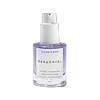What's inside
What's inside
 Key Ingredients
Key Ingredients

 Benefits
Benefits

 Concerns
Concerns

No concerns
 Ingredients Side-by-side
Ingredients Side-by-side

Water
Skin ConditioningGlycerin
HumectantBehenyl Alcohol
EmollientBakuchiol
AntimicrobialDicaprylyl Ether
EmollientGlyceryl Caprylate
EmollientRosa Canina Seed Oil
EmollientStearic Acid
CleansingCetearyl Alcohol
EmollientCalendula Officinalis Flower Extract
MaskingTocopherol
AntioxidantPentylene Glycol
Skin ConditioningCaprylhydroxamic Acid
Glyceryl Stearate
EmollientSodium Phytate
Xanthan Gum
EmulsifyingPolyglyceryl-3 Dicitrate/Stearate
EmulsifyingSodium Hydroxide
BufferingCitrus Aurantium Amara Peel Oil
Skin ConditioningWater, Glycerin, Behenyl Alcohol, Bakuchiol, Dicaprylyl Ether, Glyceryl Caprylate, Rosa Canina Seed Oil, Stearic Acid, Cetearyl Alcohol, Calendula Officinalis Flower Extract, Tocopherol, Pentylene Glycol, Caprylhydroxamic Acid, Glyceryl Stearate, Sodium Phytate, Xanthan Gum, Polyglyceryl-3 Dicitrate/Stearate, Sodium Hydroxide, Citrus Aurantium Amara Peel Oil
Water
Skin ConditioningGlycerin
HumectantPropanediol
SolventButylene Glycol
HumectantPopulus Tremuloides Bark Extract
AntiseborrhoeicBakuchiol
AntimicrobialTremella Fuciformis Sporocarp Extract
AntioxidantPsoralea Corylifolia Fruit Extract
Skin ConditioningAmethyst Extract
Skin ConditioningVaccinium Angustifolium Fruit Extract
Skin ProtectingVaccinium Myrtillus Fruit/Leaf Extract
AstringentAloe Barbadensis Leaf Juice
Skin ConditioningAloe Barbadensis Flower Extract
EmollientCorallina Officinalis Extract
Skin ConditioningGluconolactone
Skin Conditioning1,2-Hexanediol
Skin ConditioningSodium Phytate
Caprylhydroxamic Acid
Coco-Glucoside
CleansingMelia Azadirachta Flower Extract
Skin ConditioningCoccinia Indica Fruit Extract
Skin ConditioningLeuconostoc/Radish Root Ferment Filtrate
AntimicrobialMelia Azadirachta Leaf Extract
Skin ConditioningSolanum Melongena Fruit Extract
Skin ConditioningOcimum Sanctum Leaf Extract
Skin ConditioningOcimum Basilicum Flower/Leaf Extract
TonicCurcuma Longa Root Extract
MaskingWater, Glycerin, Propanediol, Butylene Glycol, Populus Tremuloides Bark Extract, Bakuchiol, Tremella Fuciformis Sporocarp Extract, Psoralea Corylifolia Fruit Extract, Amethyst Extract, Vaccinium Angustifolium Fruit Extract, Vaccinium Myrtillus Fruit/Leaf Extract, Aloe Barbadensis Leaf Juice, Aloe Barbadensis Flower Extract, Corallina Officinalis Extract, Gluconolactone, 1,2-Hexanediol, Sodium Phytate, Caprylhydroxamic Acid, Coco-Glucoside, Melia Azadirachta Flower Extract, Coccinia Indica Fruit Extract, Leuconostoc/Radish Root Ferment Filtrate, Melia Azadirachta Leaf Extract, Solanum Melongena Fruit Extract, Ocimum Sanctum Leaf Extract, Ocimum Basilicum Flower/Leaf Extract, Curcuma Longa Root Extract
Ingredients Explained
These ingredients are found in both products.
Ingredients higher up in an ingredient list are typically present in a larger amount.
Bakuchiol is a plant-derived antioxidant (it's vegan!). It is often called the replacement for retinol although it is not part of the same family.
It has similar effects as retinol: skin smoothing, reducing discoloration, and preventing wrinkles. It does not cause as much irritation as traditional retinoids.
Bakuchiol works by breaking down free radicals and stimulating collagen production in skin.
Combining bakuchiol with retinol will not have adverse side effects. Studies show using them will just boost the benefits. Bakuchiol is also found to help stabilize retinol.
While bakuchiol does not make the skin more sun sensitive, we recommend wearing SPF on a daily basis.
Read more about traditional retinol
Learn more about BakuchiolCaprylhydroxamic Acid is a chelating agent.
Chelating agents help prevent metal ions from binding to other ingredients. This helps prevent unwanted reactions and effects from using the product.
Caprylhydroxamic Acid is often used with natural antimicrobial products as an alternative to preservatives.
Learn more about Caprylhydroxamic AcidGlycerin is already naturally found in your skin. It helps moisturize and protect your skin.
A study from 2016 found glycerin to be more effective as a humectant than AHAs and hyaluronic acid.
As a humectant, it helps the skin stay hydrated by pulling moisture to your skin. The low molecular weight of glycerin allows it to pull moisture into the deeper layers of your skin.
Hydrated skin improves your skin barrier; Your skin barrier helps protect against irritants and bacteria.
Glycerin has also been found to have antimicrobial and antiviral properties. Due to these properties, glycerin is often used in wound and burn treatments.
In cosmetics, glycerin is usually derived from plants such as soybean or palm. However, it can also be sourced from animals, such as tallow or animal fat.
This ingredient is organic, colorless, odorless, and non-toxic.
Glycerin is the name for this ingredient in American English. British English uses Glycerol/Glycerine.
Learn more about GlycerinSodium Phytate is the synthetic salt form of phytic acid. Phytic acid is an antioxidant and can be found in plant seeds.
Sodium Phytate is a chelating agent. Chelating agents help prevent metals from binding to water. This helps stabilize the ingredients and the product.
Water. It's the most common cosmetic ingredient of all. You'll usually see it at the top of ingredient lists, meaning that it makes up the largest part of the product.
So why is it so popular? Water most often acts as a solvent - this means that it helps dissolve other ingredients into the formulation.
You'll also recognize water as that liquid we all need to stay alive. If you see this, drink a glass of water. Stay hydrated!
Learn more about Water